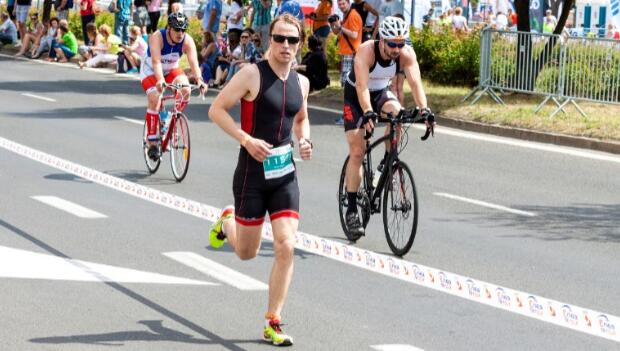
With a Sprint triathlon often taking one to two hours to complete, and Olympic-distance triathlons often lasting two to three and a half hours or more, triathletes have a warped sense of distance, no doubt! The length of even the shortest triathlons means that you can't fake the funk—you need to know how to pace the distance properly to ensure a great performance.
Triathlon Events Near You
Before we talk about how to pace a short course triathlon, we first need to establish a common "training zone" language so we're all on the same page.
Friel Zones
The heart rate training zones outlined by Joe Friel are the most commonly used in the triathlon space, so we use them for heart rate based training and racing. These zones are calculated as a percentage of your lactate threshold heart rate (LTHR), which we recommend you determine using the field tests below:
Bike Test: After a thorough warm up, perform a 40-minute time trial effort. That is, go at a hard effort that you can sustain (just barely) for 40 minutes, as if racing. Your average heart rate for this effort is your LTHR, which you will use to calculate your bike training zones below.
Run Test: After a thorough warm up, run a 10K as if racing. Your average heart rate for the test is your LTHR, which you will use to calculate your run training zones. Also record your final time and per mile pace.
Calculate your training zones using the following percentages:
- Zone 1: 65-78 percent
- Zone 2: 78-89 percent
- Zone 3: 89-93 percent
- Zone 4: 93-99 percent
- Zone 5: 100-102 percent
Now that we're all speaking the same heart rate zone language and have established a common frame of reference, let's talk about how we apply these zones to short course race pacing.
The Swim
No heart rate zones here. Instead you'll need to use some discipline and rate of perceived exertion (RPE) to prevent yourself from going too hard and digging yourself into a hole.
The Swim Start
- Strong swimmers: line up front and center, or a little off to the side in that front row. In our experience, it's better to be in the front than to be a little timid and end up having to swim around, through, or over a ton of people
- Medium: line up on the sides near the front, rather than in the middle and in the back.
- Weaker: line up on the sides and even consider letting the field get in the water 10 to 15 seconds ahead of you so you have a better chance of finding some clear water
0 to 400 meters
- The excitement of the start, the gun, the crowd and the fact that you're racing, all lend to a tendency to go way to hard in the first 400 meters. Then, you wake up at half way through to realize you've been sprinting, your arms and legs are shelled and your heart rate is sky high. This causes your to back WAY off the pace to recover and you end up swimming much slower than if you...
- Control yourself in that first 400m. You should definitely feel like you're holding something back. Focus on your form by counting your strokes. Apply some mental attention to your kick and try not to kick too much.


